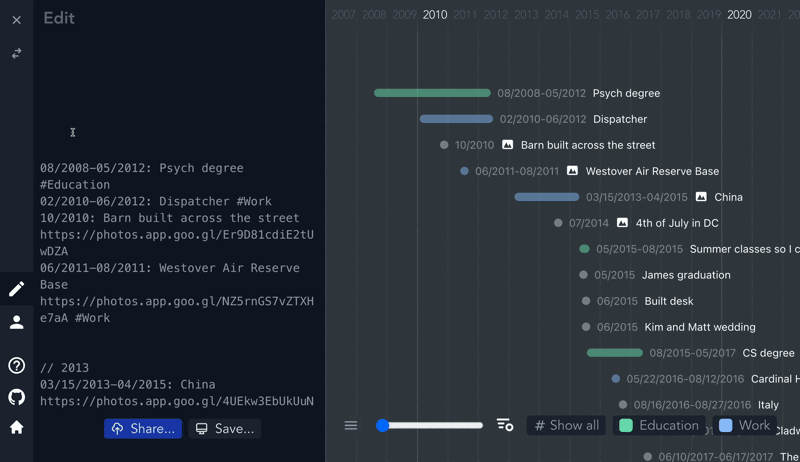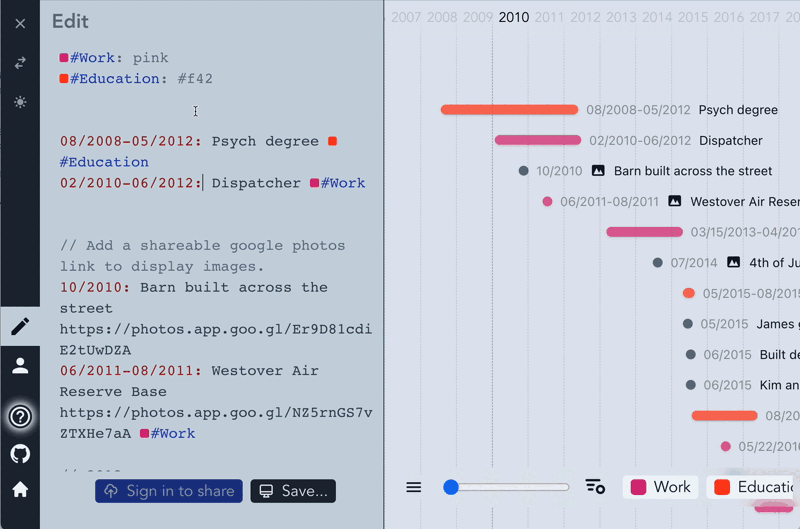Groups and Sections

Events can be grouped. To indicate a group, write group or section at the beginning of a line. End a group or section with the keyword endSection or endGroup. All events up to the ending keyword or the end of the page (whichever comes first) are in the group.
For example,
mw
group The 90s // The title for this group is "The 90s"
1991: Desert Storm
1994: Friends premiered
05/14/1998: Series finale of Seinfeld
// Nested groups are allowed
group The 2000s
03/2005: Premiere of The Office (US)
// Explicitly end the inner group
endGroup
2020: Pandemic
endGroup
// This event is not part of a group
2022: Other things happen
...
Sections behave similarly though extend to the width of the entire timeline and are activated by the section and endSection keywords:

The only difference between sections and groups are how they are styled by the view.
Read more about how groups are handled by the parser.